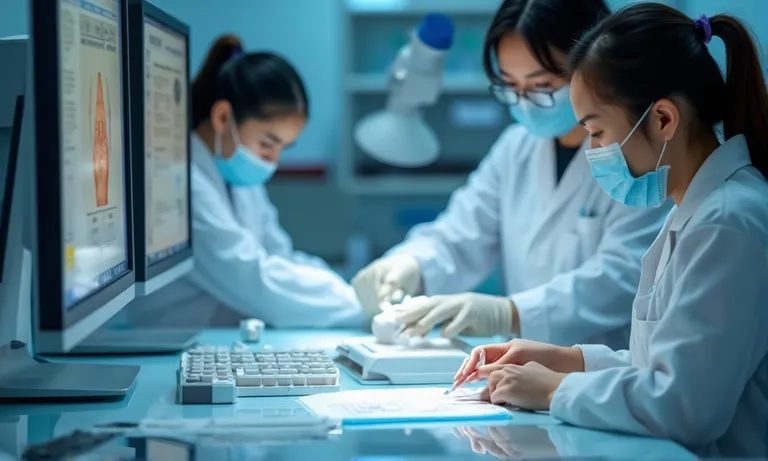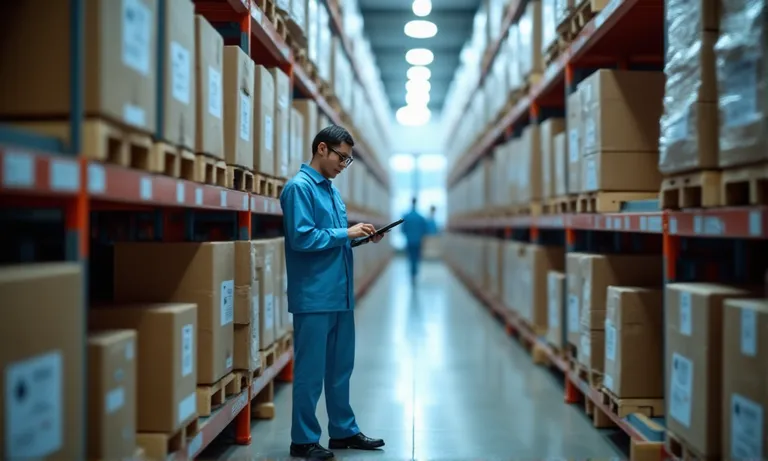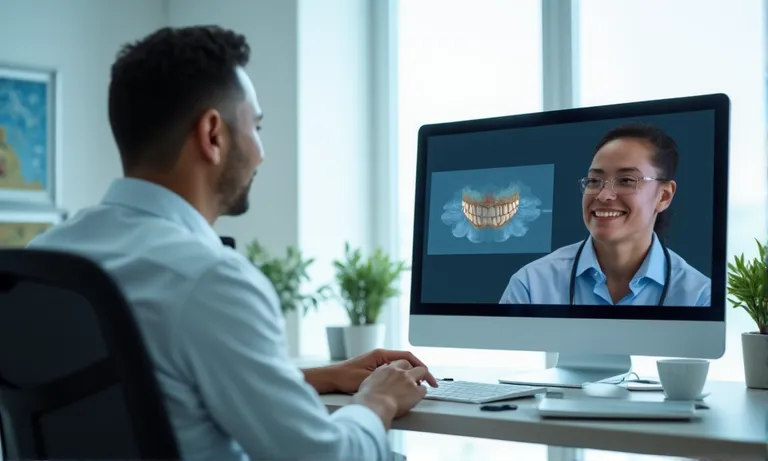Chinese dental labs offer better value not just because of lower unit pricing, but because of structural cost efficiencies across labor, workflow, material sourcing, and supply chain execution. These efficiencies translate into measurable return on outsourcing for buyers across different segments of the dental industry.
This article breaks down how Chinese labs reduce operational costs through technician specialization, modular workflows, and digital coordination. It also examines how high-volume procurement and global sourcing lower the cost of zirconia, PFM, and other core materials. Finally, it presents real-world examples of how DSOs, independent clinics, and distributors have used outsourcing models to reduce rework rates, improve margins, and stabilize delivery.
Whether you’re assessing outsourcing for the first time or refining your supplier portfolio, understanding where the real savings come from is essential to maximizing long-term value.
Decoding Labor and Operational Efficiency Advantages
Chinese dental labs reduce labor-related production costs through segmented workflows, technician specialization, and digital coordination. These structural efficiencies form the foundation of measurable cost savings in outsourcing partnerships.

Understanding Labor Cost Differentials in Dental Lab Operations
Labor cost is one of the most visible areas of savings for overseas buyers. In North America and Europe, dental technicians typically earn between $25 and $40 per hour, with senior roles demanding even more. In contrast, qualified Chinese technicians operate in organized, high-volume environments with labor costs often one-fifth or less than their Western counterparts.
This cost advantage is amplified by segmented team structures, where tasks such as CAD design, framework building, porcelain layering, and finishing are completed by specialized roles rather than a single technician. These teams are trained to handle specific stages of production with speed and consistency, enabling greater throughput without increasing errors.
For buyers, this means not just lower hourly rates, but access to task-focused labor without onboarding, training, or retention responsibilities.
Workflow Optimization and Throughput in High-Volume Labs
Operational efficiency in Chinese labs is driven by standardized, modular workflows that scale with case volume. Labs are structured around dedicated units—CAD/CAM design, ceramic processing, post-production quality control—each optimized for repeatable output.
Supportive infrastructure includes:
- Digital case management systems for file compatibility, production tracking, and progress monitoring
- Multi-shift capacity scheduling to manage high throughput without congestion
- Integrated logistics tracking that aligns case movement with delivery timelines
These systems replace manual case handling or spreadsheet tracking common in smaller labs, reducing delays caused by miscommunication or handoff errors. For overseas partners, this translates to faster turnaround times, greater delivery consistency, and fewer operational interruptions.
How Centralized Expertise Lowers Rework and Remake Rates
Chinese dental labs assign restorations to teams based on case type, material, and complexity. This centralized expertise model ensures that zirconia crowns, layered veneers, or full-arch restorations are handled by technicians with specific training and material familiarity.
At the final stage, multi-layered QA teams perform detailed inspections for fit, margin accuracy, and finish. These quality control checkpoints are tracked through digital performance dashboards, where remake rates, error types, and batch anomalies are logged and reviewed regularly.
Buyers working with structured labs often report a drop in remake rates from 8–10% to below 4%, reflecting not only cost savings but also reduced chairside disruptions and patient rescheduling.
Chinese labs convert labor cost advantage into operational reliability by integrating technician specialization, digital workflows, and team-based execution. The result is not just savings per crown, but fewer errors, smoother collaboration, and better predictability across order cycles.
At Raytops Dental Lab, we apply these same systems—specialized technician units, multi-stage QA, and full-cycle digital management—to support clients with scalable production and reliable quality. These practices are part of our broader goal: to make outsourcing not only more cost-efficient, but also structurally dependable for long-term collaboration.
How Volume and Supply Chain Optimize Material Costs
Chinese dental labs reduce per-unit material costs through high-volume procurement, vertical integration, and global supply chain leverage. These practices create cost advantages that are passed on directly to overseas buyers in the form of more competitive pricing and stable delivery.

Scale Purchasing Power in Zirconia, PMMA, and Metal
Bulk purchasing is a fundamental component of how Chinese labs manage material costs. Unlike smaller labs that order on a per-case or weekly basis, high-volume labs often source zirconia, PMMA discs, metal alloys, and lithium disilicate materials in pallet or container quantities.
This brings three immediate benefits:
- Volume-based pricing directly negotiated with manufacturers or Tier-1 distributors
- Reduced shipping and handling cost per unit due to consolidated freight
- Stable material inventory that protects against price volatility and last-minute delays
For materials like zirconia, the per-unit cost differential between a small clinic order and a container-based lab contract can reach 20–30%. These savings accumulate over time and lower the base cost of crown and bridge units.
Integrated Supply Chain Reducing Lead Time and Waste
Large labs in China often maintain partial vertical integration of their supply chain. This may include:
- In-house disc sintering or pressing units, reducing dependency on external milling centers
- Dedicated logistics partnerships for cold-chain preservation or priority clearance
- Direct sourcing from raw material manufacturers, bypassing intermediary price markups
Such integration allows labs to control production timelines and raw material quality. More importantly, waste is minimized through planned inventory rotation, matched batch ordering, and efficient nesting strategies in CAD/CAM workflows.
By aligning material flow with case flow, these labs avoid the inefficiencies that raise hidden costs in smaller, less coordinated production setups.
Comparison of Material Cost Efficiency: China vs. Local Labs
To illustrate how these practices translate into buyer value, consider the comparative per-unit cost structure for zirconia-based restorations:
| Material Element | Typical Local Lab (US/EU) | High-Volume Chinese Lab |
|---|---|---|
| Zirconia Disc Cost/unit | $35–$50 | $10–$15 |
| Milling Center Fees | $15–$25 | Included |
| Freight/Import | $8–$10 per unit | <$2 per unit (bulk) |
| Total Base Material Cost | $58–$85 | $12–$17 |
Even when accounting for international shipping and QC overhead, the material-related cost basis remains substantially lower in large-scale Chinese labs.
This efficiency gives buyers flexibility to reallocate budget toward in-house patient care, lab markup, or more advanced material upgrades.
At Raytops Dental Lab, we source crown and bridge materials in bulk directly from validated global suppliers, including multilayer zirconia, e.max ingots, and FDA-certified alloys. Our clients benefit from this supply chain structure through consistent pricing, stable lead times, and fewer disruptions due to backorders or substitutions.
The Impact of Global Sourcing on Zirconia and PFM Prices
Global sourcing models centered around Chinese manufacturing have reshaped the pricing landscape for crown and bridge materials, especially zirconia and porcelain-fused-to-metal (PFM) units. These shifts are not only affecting the production cost within labs but also influencing procurement strategies across the dental supply chain.

Why Material Sourcing Networks Matter to End Buyers
Material costs are no longer just a function of local availability. Today, the vast majority of zirconia discs, cobalt-chrome frameworks, and even veneering ceramics are produced—or at least processed—within global supply chains anchored in Asia.
Chinese dental labs operate as both high-volume producers and sourcing hubs. Their proximity to:
- Major zirconia producers in Shenzhen, Jiangsu, and Foshan
- Metal foundries that refine and alloy cobalt-chrome or titanium for dental use
- Accessory suppliers for stain-glaze kits, ingots, and finishing tools
gives them both pricing visibility and direct access to upstream production. This lowers exposure to regional material spikes and enables early adoption of new formulations and multi-layered disc technologies.
For end buyers, this sourcing efficiency translates into more consistent pricing, reduced backorder frequency, and faster incorporation of updated material SKUs.
Real Cost Ripple Effect from Global Dental Trade Routes
Over the past decade, the rise of centralized Chinese labs has coincided with a flattening of zirconia material pricing globally. As more dental buyers shift volume to labs in Asia, upstream suppliers adjust their distribution strategies, often offering better terms to Chinese contract buyers than to fragmented Western resellers.
This creates a ripple effect:
- Chinese labs get first-tier pricing
- Western buyers sourcing through them access lower per-unit rates
- Regional labs and dealers face compression in margins or longer supply chains
While smaller local labs may still charge $85–$100 per unit for zirconia crowns due to higher material overhead, buyers outsourcing to high-volume Chinese labs often report all-in restoration costs in the $30–$45 range, including material, fabrication, and finishing.
For DSOs or multi-location clinics handling thousands of crowns annually, this delta directly impacts treatment margins and purchasing decisions.
Shifts in PFM and Zirconia Pricing Driven by Chinese Supply Anchoring
The influence of Chinese sourcing is particularly evident in the decline of PFM restoration costs. With more than 80% of global dental-grade cobalt-chrome alloys processed in Asia, Chinese labs benefit from:
- Localized access to refined non-precious alloys
- Streamlined metal substructure casting and finishing workflows
- Integrated ceramic layering teams specialized in PFM esthetics
As a result, what was once considered a high-cost, labor-intensive restoration has become a more affordable alternative, especially for posterior cases where aesthetics are less critical. In some markets, PFMs produced in Chinese labs now cost less than monolithic zirconia made domestically.
Zirconia, meanwhile, has benefited from local innovation and volume adoption. Multi-layer discs, faster sintering protocols, and optimized nesting software allow Chinese labs to keep unit costs low while upgrading output esthetics.
At Raytops Dental Lab, we work directly with material producers and invest in continuous upgrades to our zirconia and PFM workflows. This allows our clients to access a broader range of material options with consistent cost control, regardless of global pricing fluctuations.
Case Studies: Cost-Saving Outsourcing Paths for DSOs, Clinics & Dealers
Buyers across the dental industry—whether scaling DSOs, independent clinics, or product distributors—approach outsourcing for different reasons. However, when executed with the right lab partner and clear operational alignment, these collaborations often deliver both immediate and long-term cost advantages.

Case 1: How a US-Based DSO Cut Down Remake Costs by 20%
A growing dental support organization (DSO) with over 40 locations across the Midwest faced rising remake rates and inconsistent crown delivery timelines from regional labs. Their internal quality audit showed that over 9% of crown-and-bridge cases required adjustment or remake, leading to chairside delays, lost time, and patient dissatisfaction.
After onboarding a Chinese dental lab with digital workflow compatibility, centralized technician teams, and QA tracking infrastructure, the DSO achieved:
- Remake rate reduction to 3.8% within six months
- Synchronized delivery cycles across all locations
- Annual savings of $180,000 in remakes and clinical time cost
The transition involved structured onboarding: material calibration, joint case evaluations, and phased location rollout. The key to savings was not only lab unit price, but predictability and lowered rework overhead.
Case 2: Independent Clinic Gains Margin with Smart Outsourcing Mix
A private clinic in Western Europe with two full-time dentists had historically used local labs, prioritizing speed and personal rapport. However, with crown costs averaging €90–€100 and rising patient cost sensitivity, they began selectively outsourcing posterior monolithic zirconia cases to a Chinese lab.
The clinic’s hybrid strategy focused on:
- Retaining anterior or high-aesthetic cases locally
- Outsourcing posterior crowns in weekly batches
- Using pre-set digital order templates for case efficiency
This partial outsourcing led to an average unit cost drop of 55% on outsourced crowns, freeing up margin for reinvestment in chairside scanning and patient experience improvements. Importantly, patient satisfaction remained stable, as outsourced cases met clinical requirements without compromise.
Case 3: Distributor’s View: Outsourcing Crown & Bridge to Expand Profit Margins
A dental product distributor in Australia added private-label crown-and-bridge products to their offering in response to clinic demand. Instead of building an in-house lab, they partnered with a Chinese lab to develop a co-branded restoration line.
The partnership structure included:
- Volume-based tiered pricing tied to monthly demand
- Fixed logistics windows for predictable shipping
- Custom packaging and digital case integration under the distributor’s brand
By sourcing restorations at 40–60% below domestic fabrication cost, the distributor created a margin buffer that allowed competitive pricing while maintaining profitability. The key success factor was batch standardization and lab-side coordination, which ensured scalability without increasing headcount or fixed overhead.
Raytops Dental Lab has worked with buyers across these profiles to build outsourcing programs that match clinical, logistical, and commercial needs. Whether it’s through phased integration for DSOs, case-type segmentation for clinics, or private-label workflows for distributors, our focus remains on delivering stable value through operational precision and transparent collaboration.
Outsourcing to Chinese dental labs delivers savings that go beyond price per unit. The value lies in how labor specialization, workflow design, material sourcing, and global logistics come together to reduce waste, minimize remakes, and improve operational predictability. For buyers navigating high patient volumes, tight margins, or multi-location demands, these efficiencies can reshape not only cost structure but also how care is delivered.
Addressing Concerns: Building Trust in Cross-Border Collaboration
Strategic transitions often bring uncertainty. When considering cross-border outsourcing, it’s natural to question how communication will work, whether time zone gaps could cause delays, or how long it might take to align expectations during the initial phase. These concerns are not only valid—they’re expected.

Experienced Chinese dental labs have taken deliberate steps to turn these early-stage challenges into opportunities to build trust and operational confidence. Instead of minimizing these concerns, they’ve built service systems around them to ensure transparency, responsiveness, and predictability from day one.
To support seamless collaboration, many labs have implemented:
- Multilingual account service teams trained to manage technical and clinical communication across diverse markets
- 24-hour response mechanisms, allowing buyers in different time zones to receive timely updates and clarifications
- Structured onboarding processes, including test cases, calibration protocols, and phased volume rollout to ensure a controlled start
These systems are not just procedural—they’re strategic tools that make overseas cooperation stable, repeatable, and scalable. Clear workflows and proactive feedback loops allow both sides to adjust quickly, minimize errors, and reduce the learning curve associated with new vendor onboarding.
Working with a seasoned lab partner means gaining more than lower unit costs. It means gaining a built-in support infrastructure designed to handle uncertainty, absorb operational risk, and help buyers scale confidently. When the foundations of communication, visibility, and response are solid, outsourcing becomes not just a tactical decision—but a strategic advantage.
Outsourcing to Chinese dental labs delivers savings that go beyond price per unit. The value lies in how labor specialization, workflow design, material sourcing, and global logistics come together to reduce waste, minimize remakes, and improve operational predictability. For buyers navigating high patient volumes, tight margins, or multi-location demands, these efficiencies can reshape not only cost structure but also how care is delivered.
The ability to extract long-term value depends on alignment—between your internal processes and the lab’s execution system. At Raytops Dental Lab, we support that alignment through structured workflows, responsive coordination, and scalable production systems tailored to each client’s operational model. When outsourcing moves from transactional to integrated, it becomes not just a cost decision, but a platform for sustainable growth.


